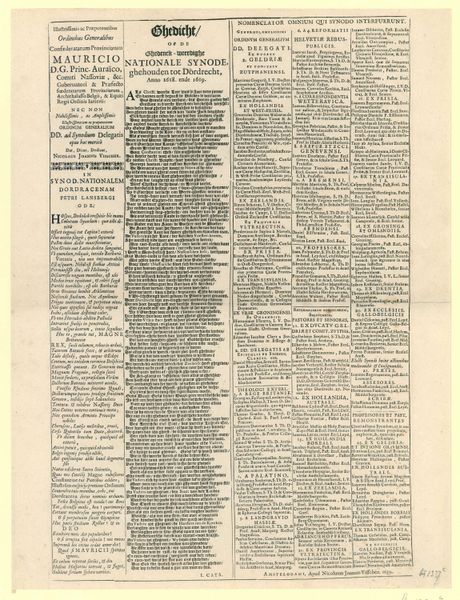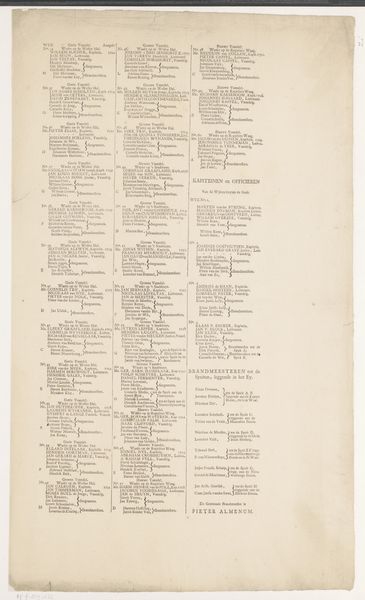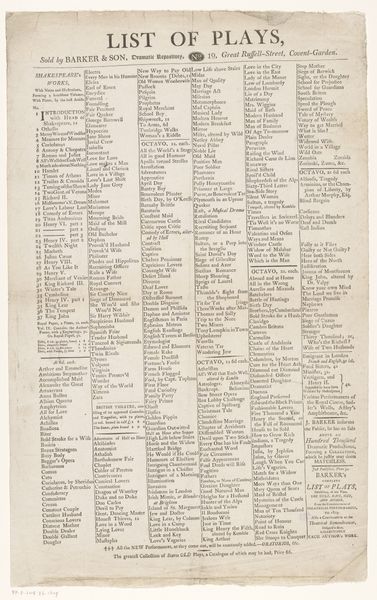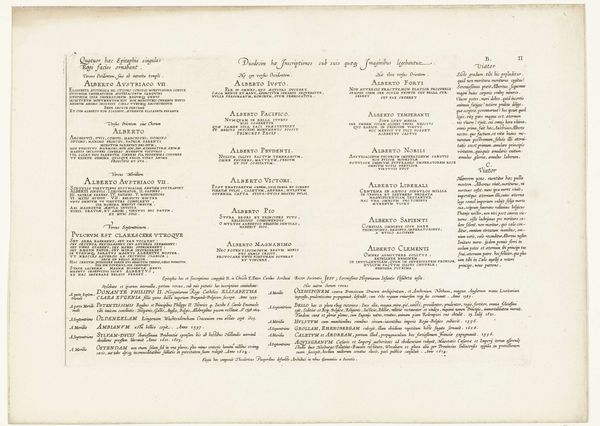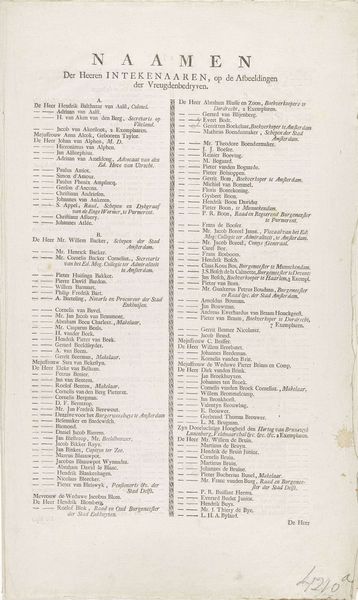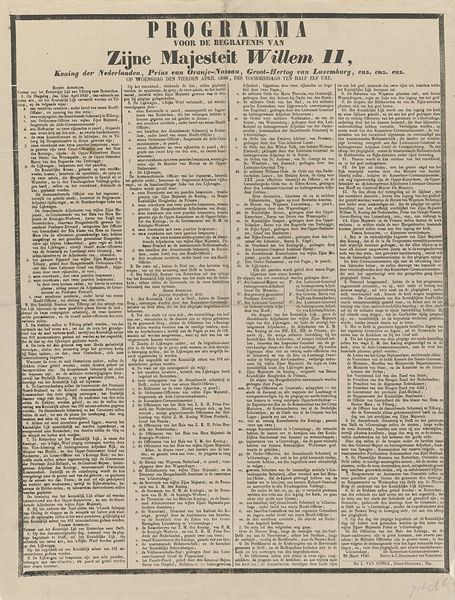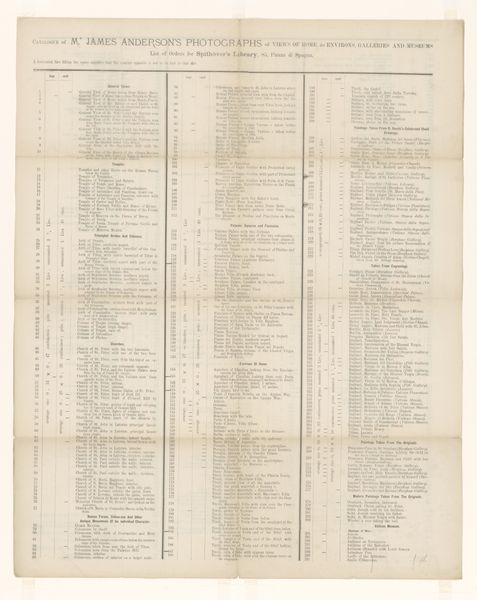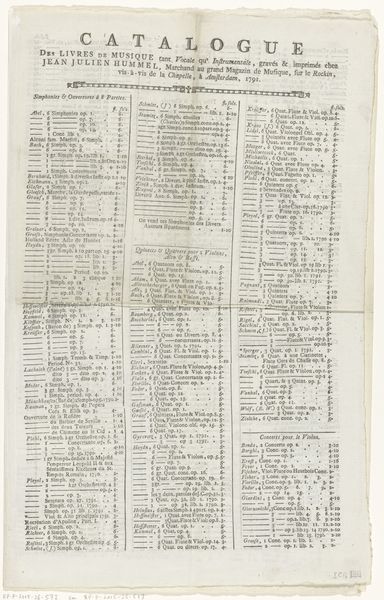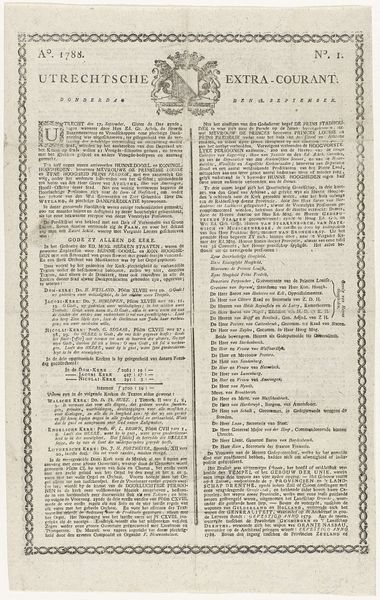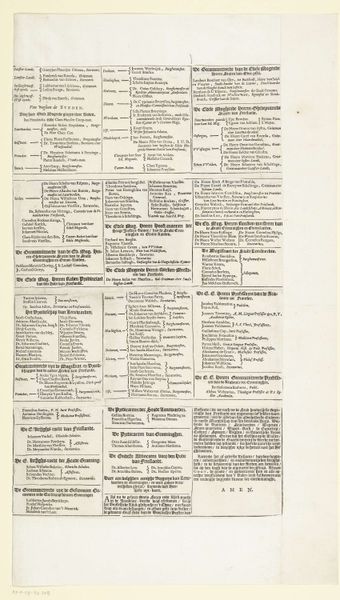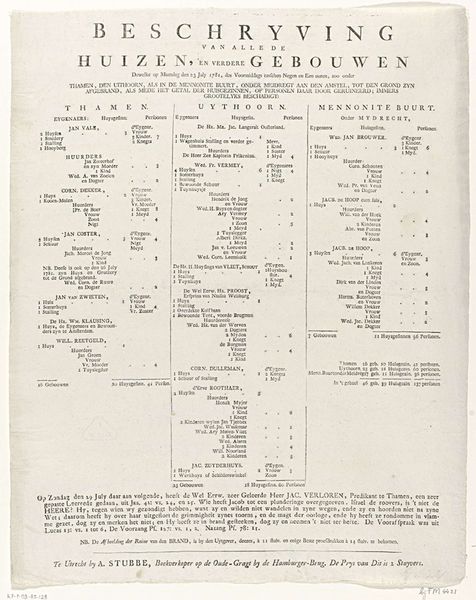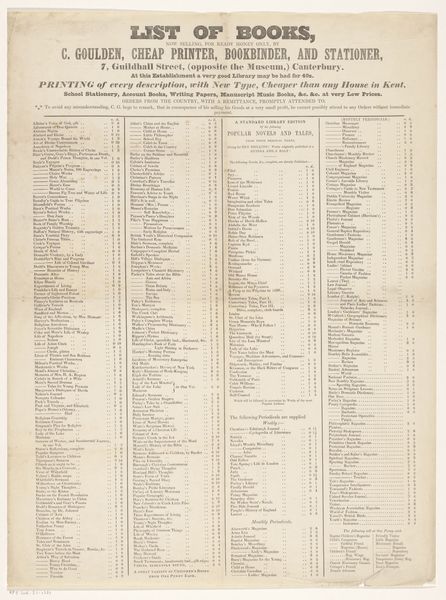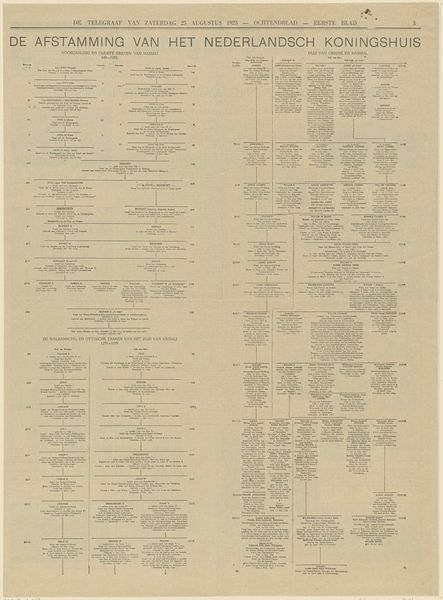
Namenlijst van leden van de Amsterdamse comités, 1795 Possibly 1795
0:00
0:00
gerritbrenderabrandis
Rijksmuseum
graphic-art, print, paper, typography
#
graphic-art
# print
#
paper
#
typography
#
history-painting
Dimensions: height 584 mm, width 465 mm
Copyright: Rijks Museum: Open Domain
Curator: This…it’s a list. "Namenlijst van leden van de Amsterdamse comités, 1795," or a list of names of members of the Amsterdam committees, from, well, possibly 1795. It’s a printed document, presumably meant for wide distribution. The Rijksmuseum holds it now, but it clearly had a different life then. Editor: It seems pretty straightforward: dense typography on aged paper. My first thought is how…public it is, in a way. Like civic duty made visible. What strikes you about it? Curator: "Civic duty" is a fascinating lens. Look at the historical context: 1795, the Batavian Revolution. This wasn't just paperwork; it's a statement of political belonging, a documentation of individuals actively participating in reshaping their society. Editor: So it's not just a list, but a political declaration? How would people in that era look at a document like this? Curator: Absolutely. Imagine seeing your name – or your neighbour's – on this list. What would it signify? Social advancement? Support for the changing political order? Or possibly, a dangerous vulnerability, depending on which side you were on prior to the Batavian Republic being founded? Do you think there might be those left out by this printing, who could not have their names listed? Who were included in these comités, and who was systematically excluded? Editor: I hadn’t considered that. Seeing it as a historical artefact, I didn’t think about who was deliberately missing. That changes the tone completely. Curator: Exactly. It urges us to question power dynamics and visibility. This isn't just names; it’s a snapshot of a society grappling with revolution and the very definition of citizenship, and how printing served to actively include or exclude citizens. Editor: That's made me rethink how even seemingly simple documents can have such loaded, complex meanings and how even acts like making lists are never truly neutral. Curator: Indeed. By interrogating these layers, we uncover not just history but the ongoing dialogues around belonging, identity, and the enduring relevance of these debates today.
Comments
No comments
Be the first to comment and join the conversation on the ultimate creative platform.
